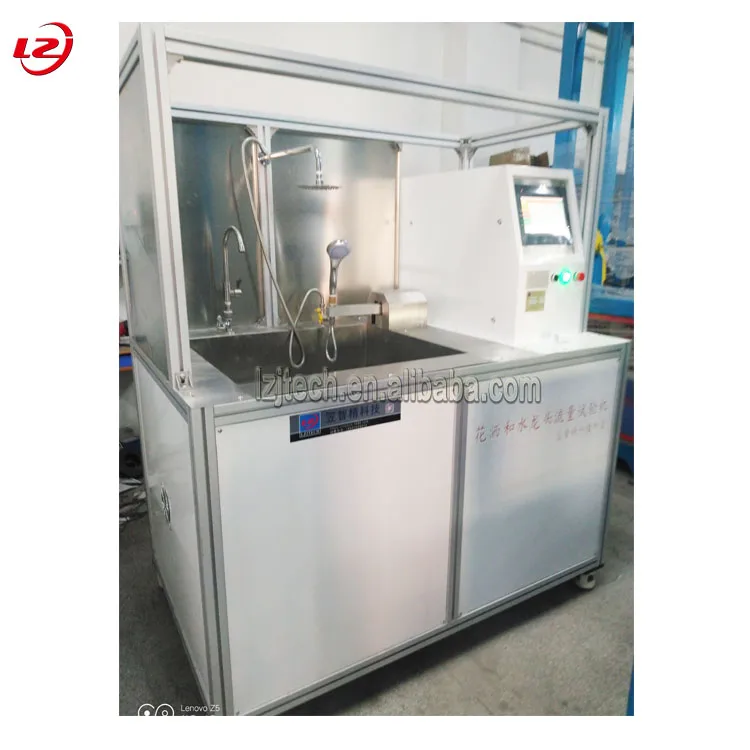
Chloride is the most important single source of SCC. Test specimens are left in the chamber for a full 24 hours.

For austenitic stainless steel equipment the test water is limited to less than 250 weight ppm chloride ion with a pH between 6 and 9.
Stainless steel water test. During hydrostatic testing of stainless steel equipment the chloride content of the test water must be within the range to which the stainless steel grade is resistant. Figure 1 shows the maximum temperatures and chloride contents to which stainless steels are resistant in. The water test will tell you when your stainless steel pan is hot enough to add the oil immediately followed by the meat you intend to sear.
Sometime before you need to sear your next cut of meat take the time to conduct this little experiment. A stainless steel saute pan. 18th teaspoon measuring spoon.
A cup of water. At this temperature which is around 379 for water a droplet of water will ball and bounce around the pan and take longer to evaporate than it would in a slightly cooler pan. You can also.
Electro-galvanized carbon steel AISI 441 type stainless steel 48h 380h Figure 1. Electro-galvanized carbon steel and AISI 441 type stainless steel after short and long salt spray test exposure. The salt spray test can also be a combined test of material and surface finish due to the fact that roughness and.
Problems for stainless steel. Chloride is the most important single source of SCC. It destroys the passivation layer of stainless steel and causing pitting corrosion.
The microbial growth accelerates the pitting corrosion. The hydrotest water for stainless steel need address these issues. Use the cleanest water available.
For austenitic stainless steel equipment the test water is limited to less than 250 weight ppm chloride ion with a pH between 6 and 9. Usually potable water meets this requirement. For high pressure service above about 100 barg less than 50 weight ppm chloride ion is required.
Potable water quality for hydrotest of Stainless Steel Tanks shall be maximum 50 ppm of Chloride in Appendix S of API 650 Atmospheric Tank Standard. Jehan17718 Mechanical 5 Feb 08 1116 Quality of hydrotest water is typicalluy specified in. There are three main types of structures in stainless steelaustenite ferrite and martensite.
When you see stainless steel labeled as 188 or 1810 this is telling you how much chromium and nickel is in the steel. The first number indicates 18 chromium and the second 8 or 10 nickel. Stainless steels can be hard to identify.
The different types can be distinguished by methods as. For full table with Sulfuric and Hydrochloric Acid Test - rotate the screen. How Using a Bruker XRF Stainless Steel Tester Saves Money.
As its name suggests stainless steel is prized above all for its anti-rust anti-corrosion properties. These are due to the relevant alloys elemental composition chiefly to the presence of chromium molybdenum and sometimes copper. Stainless steel known as inox or.
Test specimens are left in the chamber for a full 24 hours. Parts that pass this test exhibit no signs of rust or staining at the surface. This test is universal to all types of stainless but necessitates purchasing calibrating and maintaining a humidity chamber which can be expensive.
This video shows a test to detect iron contamination on stainless or to differentiate between stainless steel and carbon steel. This practice is the copper s. Hot Water Test.
195 195 195 195 195 195 2 hrs. 155 165 155 170 166 168 4 hrs. 128 156 140 150 155 166 8 hrs.
111 141 113 132 137 159 12 hrs. 92 130 96 120 126 151 Average Ambient Air Temperature at time of testing. 36 36 36 36 36 36 4 hrs.
48 44 54 46 41 38. Piping fabricated or having components of 300 series stainless steel should be hydrotested with a solution made up of potable water see note or steam condensate. After hydrostatic testing is completed the piping should be thoroughly drained all high-point vents should be opened during draining air blown or otherwise dried.
The dripping water tests with formation of salt deposits in this study are likely to provide important information on the salt deliquescence and corrosion behavior of a stainless steel canister in this environment. Usually the material design of stainless steel of nuclear grade follows the ASME Boiler and Pressure Vessel Code and the. The salt spray test was designed to assess the quality of coatings eg.
For many stainless steels the aggressive salt spray solution even more harsh than sea water leads to a failure in the test. In real life service the steel withstands decades. The aim of this project is to investigate the effect of water purity on carbon steel and stainless steel.
Two corrosion tests are used. Electrochemical measurements and weight loss test. When put to the test under extremes of conditions the vacuum sealed stainless steel water bottles came out champions.
Various people and companies have carried out tests such as putting ice water in the stainless steel water bottles and then leaving them under exposure to.